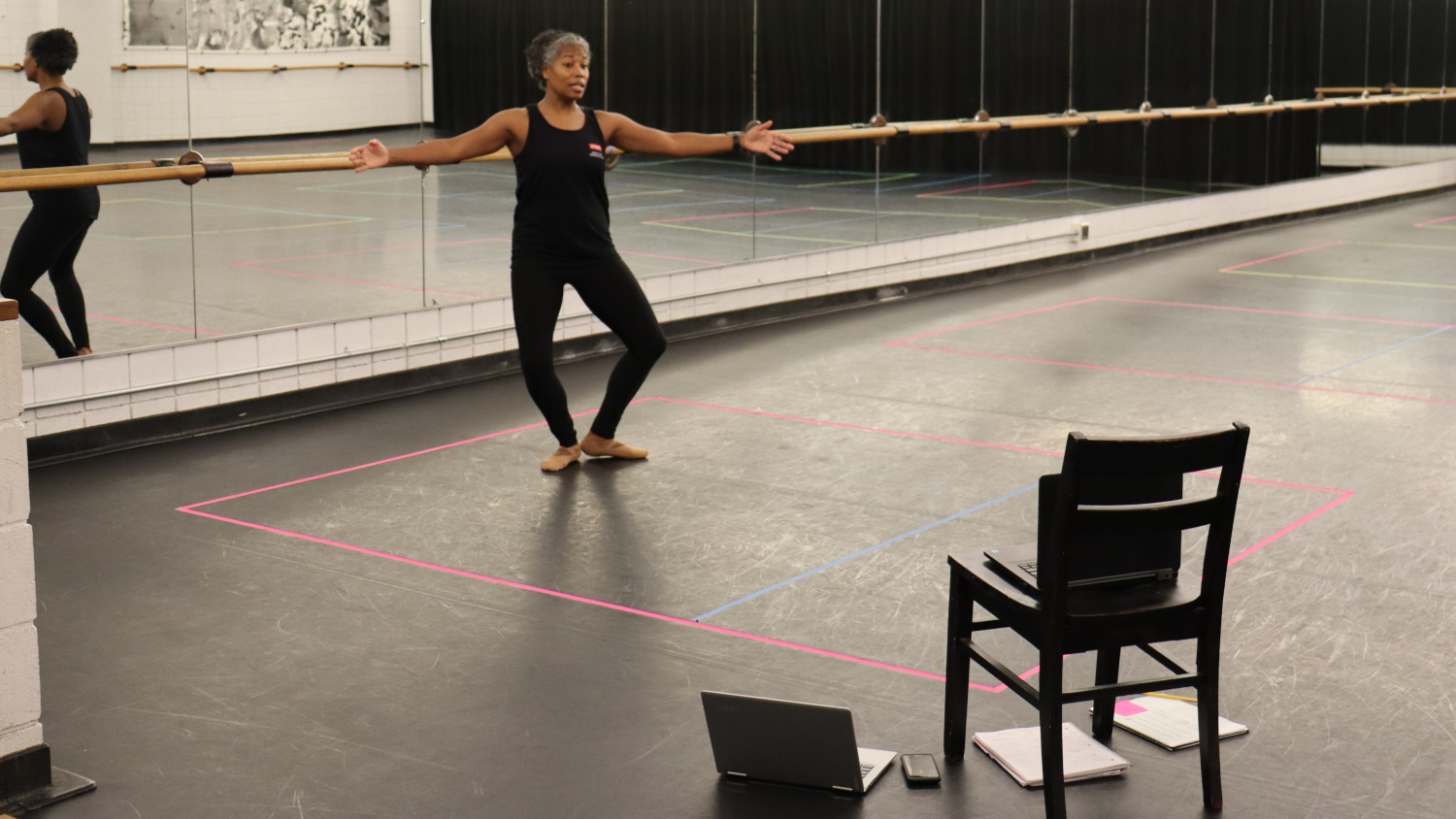HES Looks Ahead to the Spring Semester
Faculty in the Department of Health and Exercise Studies used creativity and lessons from the fall to plan spring 2021 classes that deliver the same experience of a semester on campus.

By Lindsay Rusczak
On the first day of the spring 2021 semester, many students in health and exercise studies (HES) classes will not be meeting at Carmichael Gym, on Miller Fields nor in the Aquatic Center, but will be attending class from home. The adjustment to online learning can be challenging for students, and even more difficult in exercise and movement-based classes. Taking lessons learned from the August transition and keeping these challenges in mind, HES faculty prepared their spring courses with the goal of delivering the same experience of a semester on campus.
“Based on experiences from the fall, faculty were better prepared to create a smooth transition for students. For Spring 2021, we reviewed updated research in planning the schedule with a mix of online and hybrid delivery,” said Beth Wright Fath, HES department head and associate teaching professor.
The biggest change to HES schedules is the adoption of hybrid and online-only class sections. Over 75 percent of HES classes are offered online or in a hybrid format this semester in order to reduce the number of students in on-campus classes. Students taking classes in person will be required to wear face coverings during class, and there are increased cleaning procedures in all instructional spaces, including cleaning all equipment between each user.
Planning for many HES classes required extra creativity. Scott Schneider, a senior lecturer of outdoor leadership, taught HESO 258 Basic Rock Climbing last semester, and is offering it again in the spring.
“What makes my courses effective, in part, is the experiential nature of them,” he said. “So, when I was designing my Basic Rock Climbing classes for an online format I tried my best to keep my students actively engaged in the content. I continue to adjust and create readings, reflections and video content for my courses.”
Schneider also offered optional help sessions where students could individually practice the course material at the climbing wall (or in a canoe for his fall class HESO 255 Basic Canoeing).
“Almost every one of my students took advantage of these opportunities. I had one student so excited to canoe every week that he drove over an hour and a half to meet at Lake Raleigh,” Schneider said.
Like Schneider, other HES faculty members created additional class material to supplement online lectures.
Lecturer Marcus Thompson implemented a new teaching strategy for his HESS 237 Weight Training class last semester and plans to use it again. He created pre-recorded videos of different movements taught in class and instructed students to follow along as they watched. The students then had to explain the workout, demonstrating what they had learned.
“At the end of a lesson, I ask the student to teach me how to do something. I want to give them the autonomy to learn and actually discuss their learning. This way, they are not passively learning, but are engaged and talking,” Thompson said.
Given the additional time to plan for the semester, faculty remain optimistic about the logistics of teaching their classes. However, faculty say that the students’ work ethic will contribute to their academic success.
Assistant teaching professor Joan Nicholas-Walker taught her HESD 264 Ballet I class from her laptop in Carmichael Gym last semester. During her live classes, she watched as her students transformed their homes into dance studios and participated in class with the same focus.
“I was extremely impressed with students’ flexibility, endurance and positivity last semester,” said Nicholas-Walker. “They literally danced over, around and through furniture, pets and people. They did this while maintaining their concentration and positivity.”
Schneider’s students are also the reason for his positive outlook for the semester.
“Despite the hard time that we face in higher education and in society, I’m hopeful for the future based on the hard work and dedication I’ve seen from my students this past year.”


